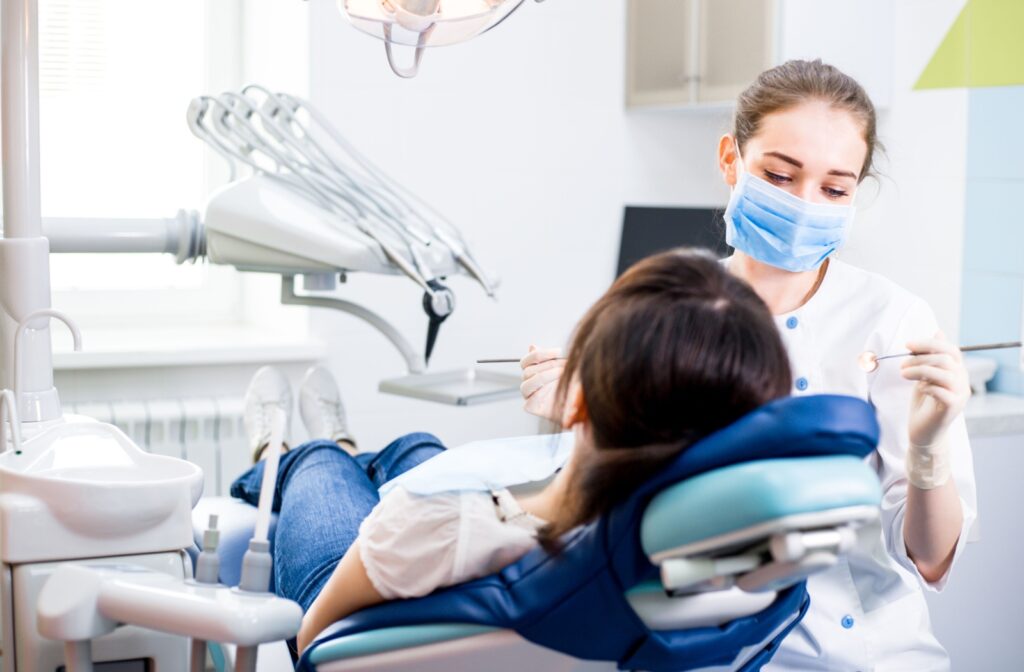A permanent retainer is a wire that’s glued to your teeth after you have braces. While a permanent retainer keeps your teeth in place, flossing can be daunting. So, how do you clean those hard-to-reach spots without disrupting the delicate wire in your mouth?
Flossing can pose some challenges, but you can use threaders, interdental brushes, or water flossing to maintain good oral hygiene with a permanent retainer. Speak to your dentist about personalized recommendations.
What Are Permanent Retainers?
You’ve endured months, perhaps even years, with braces to achieve straight teeth, only to be told it’s not over yet and you need a retainer. Unlike removable retainers, permanent retainers, also called bonded retainers, aren’t just about maintaining your orthodontic work; they’re the enforcers of discipline for your teeth.
Usually affixed to the back of the teeth, these are metal wires glued to your teeth. They provide the subtle pressure and correction sometimes necessary to prevent your teeth from reverting to their previous positions.
Challenges of Flossing with a Permanent Retainer
Permanent retainers may act like a silent guardian for your smile, but flossing around them requires more effort, precision, and care.
Navigating Tight Spaces
One of the most immediate challenges with a permanent retainer is flossing in the tight spaces of your mouth. Unlike the more accessible brackets of braces, retainers are fixed in place and offer little allowance for fumbling fingers or thick floss.
Risk of Breakage
Retainer wires, while durable, are not indestructible. Incorrect flossing can lead to snapping or loosening the wire, which means returning to the orthodontist for repairs. This can include a replacement fee and can set back your orthodontic progress.
Plaque Buildup
Plaque can easily accumulate around the retainer if you brush and floss incorrectly or not regularly. Plaque buildup can lead to various dental issues, from common cavities to serious problems like gum disease.
Flossing Techniques with a Permanent Retainer
Flossing with a permanent retainer is not impossible, but it requires a proper technique you can hone over time. Here are some effective techniques to master this vital part of your dental routine.
Invest in floss threaders and interdental brushes. Floss threaders are a needle-like tool that allows floss to be maneuvered around braces or, in this case, a permanent retainer. Interdental brushes, on the other hand, are tiny brushes designed to slide into the spaces between teeth.
Here are tips on how to use floss with a floss threader:
- Thread the needle: Start by threading a 6-inch piece of floss through the loop of the floss threader.
- One tooth at a time: Gently guide the floss between each tooth and through the permanent retainer wire. Do not snap the floss, as this could damage the wire.
- Clean and lean: Lean the floss against each tooth and under the gumline, but don’t be too forceful as this can injure the gums. Slide it up and down the tooth’s surface to remove plaque effectively.
- Rinse and repeat: Move to the next pair of teeth, and continue until you have flossed every tooth secured by the permanent retainer.
- Brush away: Use an interdental brush to clean any residual plaque and food particles. Brush your teeth and rinse thoroughly.

Oral Hygiene Practices with a Permanent Retainer
Apart from flossing, there are other oral hygiene practices that you can incorporate into your dental hygiene routine with a permanent retainer.
Regular Visits to Your Dentist
Your dentist is your partner in maintaining good dental health. Regular check-ups allow them to monitor the condition of your retainer and oral health. They can also guide you on any issues related to flossing or general hygiene.
Mind Your Diet
The foods you eat can impact your retainer and overall dental health. Sticky or hard foods can cause damage or get stuck, making cleaning more difficult. A balanced diet can help protect your teeth and a permanent retainer.
Maintaining Oral Health with Permanent Retainers
Flossing with a permanent retainer might not be simple initially, but with multiple flossing tool options and the correct technique, it can become easier with time. Good oral hygiene practices can help keep your teeth and gums healthy and protect your permanent retainers.
By following the techniques and tips outlined above, you can turn the chore of flossing with a permanent retainer into a manageable task that becomes second nature.
If you have dental problems or are concerned about your teeth or smile, book an appointment with Hometown Dental today.





